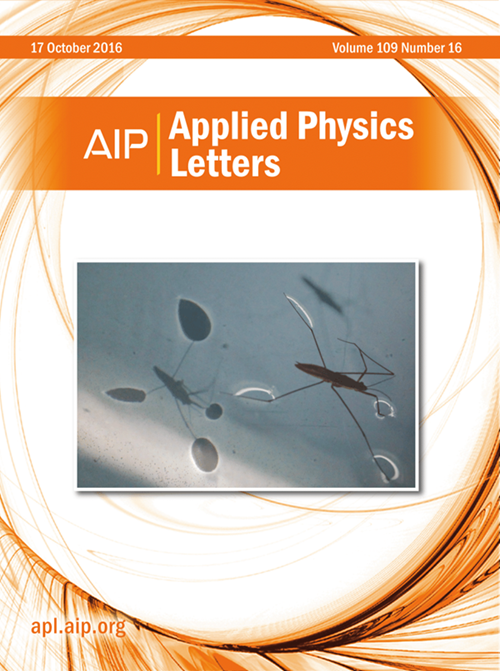High hydrogen storage capacity and reversible storage/release mechanism of the BC2N monolayers via charge modulation
IF 3.5
2区 物理与天体物理
Q2 PHYSICS, APPLIED
引用次数: 0
Abstract
Although hydrogen is an effective alternative energy source to fossil fuels, its storage is a challenge for extensive applications. The hydrogen storage performance and mechanism of the BC2N monolayers with and without modulation of strain and charge were investigated using first-principles methods. The pure BC2N monolayer achieves a high hydrogen storage gravimetric density (HSGD) of 10.95 wt. %; however, the average adsorption energy (Ead) of H2 molecules is only 0.138 eV, which immensely hinders its practical applications and motivates us to introduce clean modulations for the Ead improvement with maintaining the HSGD. Our results indicate that strain engineering has little effect on enhancing the adsorption strength of H2. However, charge engineering can efficiently modulate the interaction between H2 molecules and BC2N. When −5e charges are applied into the monolayer, Ead of H2 molecules increases to 0.225–0.460 eV. The interaction between charged BC2N and H2 molecules is of electrostatic nature. The desorption temperature of H2 molecules is between 287 and 383 K at 1 atm. The adsorption condition of 297 K∼30 atm and the desorption condition of 385 K∼1 atm for the reversible charge-modulated BC2N monolayer are preferred. Furthermore, the reversible storage/release of H2 on/from the BC2N monolayer can be easily controlled by modulating the charge states of BC2N. Combined with the analysis of desorption temperature and occupation number, our findings highlight that the BC2N monolayer with charge modulation is an ideal reversible hydrogen storage material with high HSGD and fast-kinetics.通过电荷调制制备BC2N单层膜的高储氢能力和可逆储放机制
虽然氢是一种有效的替代化石燃料的能源,但它的储存是一个广泛应用的挑战。采用第一性原理方法研究了应变和电荷调制和不调制的BC2N单层膜的储氢性能和储氢机理。纯BC2N单层储氢重量密度(HSGD)为10.95 wt. %;然而,H2分子的平均吸附能(Ead)仅为0.138 eV,这极大地阻碍了它的实际应用,这促使我们在保持HSGD的同时引入清洁调制来改善Ead。结果表明,应变工程对提高H2的吸附强度影响不大。然而,电荷工程可以有效地调节H2分子与BC2N的相互作用。当- 5e电荷作用于单分子层时,H2分子的Ead值增加到0.225 ~ 0.460 eV。带电的BC2N和H2分子之间的相互作用具有静电性质。H2分子在1atm下的解吸温度在287 ~ 383 K之间。可逆电荷调制BC2N单分子膜的吸附条件为297 K ~ 30 atm,解吸条件为385 K ~ 1 atm。此外,通过调节BC2N的电荷状态,可以很容易地控制H2在BC2N单层上的可逆存储/释放。结合解吸温度和占据数的分析,我们的研究结果强调了电荷调制的BC2N单层具有高HSGD和快速动力学的理想可逆储氢材料。
本文章由计算机程序翻译,如有差异,请以英文原文为准。
求助全文
约1分钟内获得全文
求助全文
来源期刊

Applied Physics Letters
物理-物理:应用
CiteScore
6.40
自引率
10.00%
发文量
1821
审稿时长
1.6 months
期刊介绍:
Applied Physics Letters (APL) features concise, up-to-date reports on significant new findings in applied physics. Emphasizing rapid dissemination of key data and new physical insights, APL offers prompt publication of new experimental and theoretical papers reporting applications of physics phenomena to all branches of science, engineering, and modern technology.
In addition to regular articles, the journal also publishes invited Fast Track, Perspectives, and in-depth Editorials which report on cutting-edge areas in applied physics.
APL Perspectives are forward-looking invited letters which highlight recent developments or discoveries. Emphasis is placed on very recent developments, potentially disruptive technologies, open questions and possible solutions. They also include a mini-roadmap detailing where the community should direct efforts in order for the phenomena to be viable for application and the challenges associated with meeting that performance threshold. Perspectives are characterized by personal viewpoints and opinions of recognized experts in the field.
Fast Track articles are invited original research articles that report results that are particularly novel and important or provide a significant advancement in an emerging field. Because of the urgency and scientific importance of the work, the peer review process is accelerated. If, during the review process, it becomes apparent that the paper does not meet the Fast Track criterion, it is returned to a normal track.
 求助内容:
求助内容: 应助结果提醒方式:
应助结果提醒方式:


